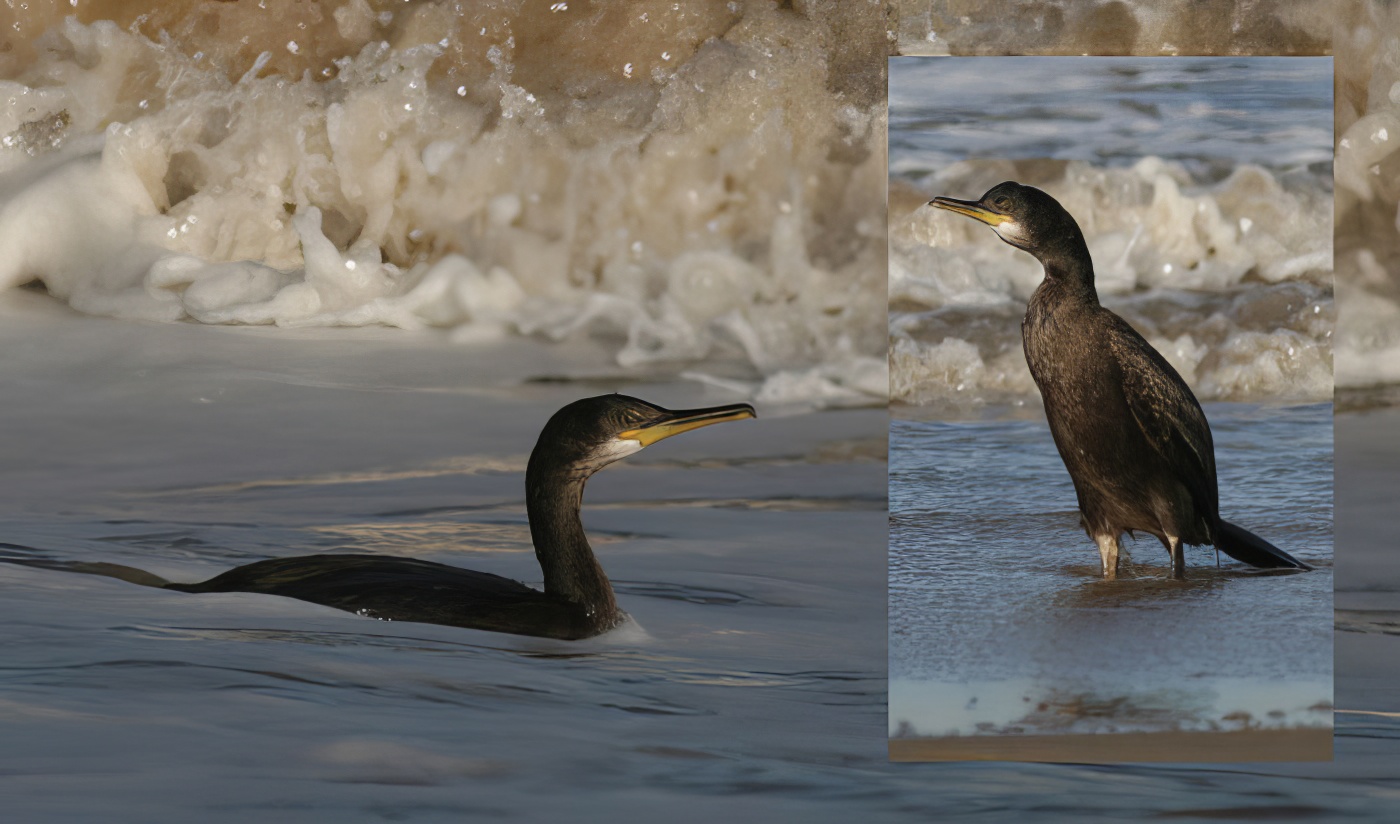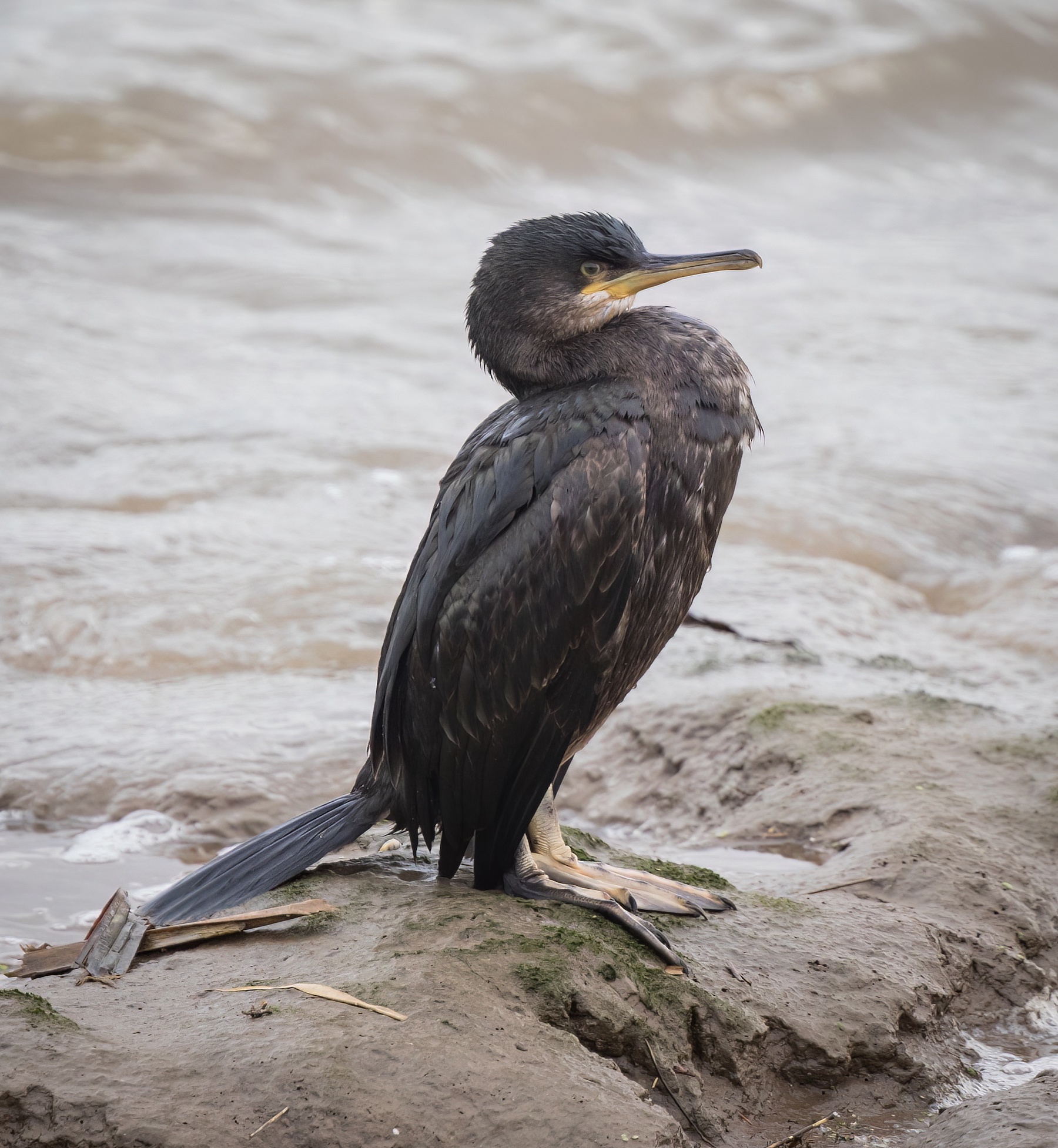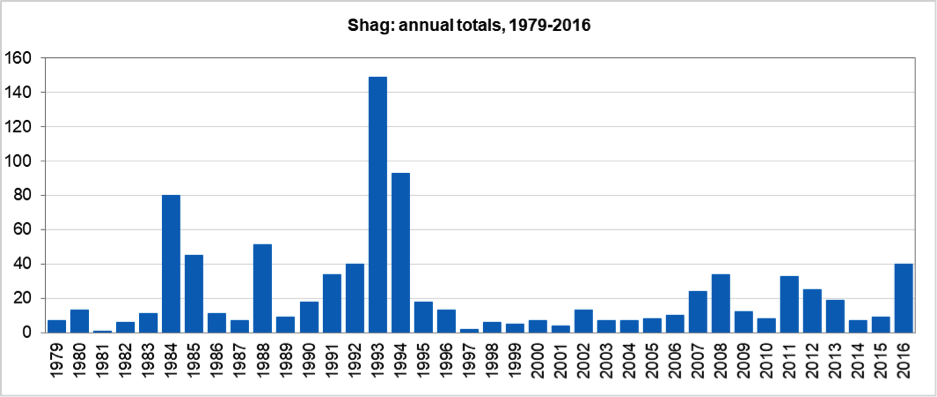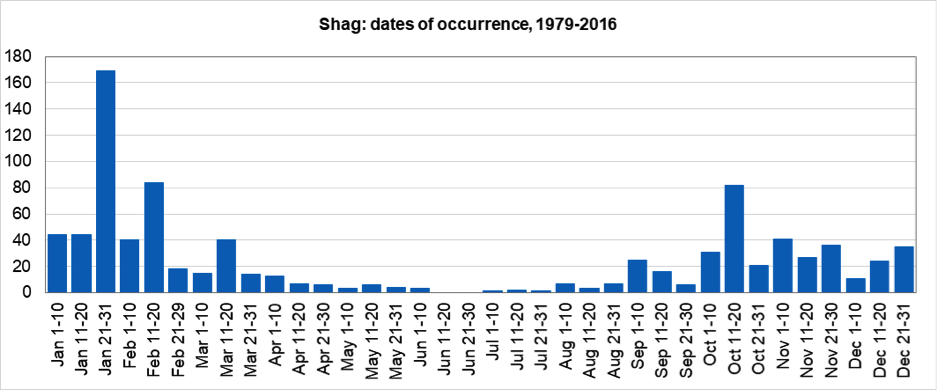Shag Gulosus aristotelis
Usually very scarce/scarce winter visitor Sep-May to the coast and inland, with occasional larger influxes. Exceptional in summer.



The average for the twenty years to 2016 has been 14.0 individuals per year but over the whole period since 1979 it was 23.3. The UK breeding population of Shag reached a high level during the late 1980s and early 1990s but then declined quite sharply and it has remained at a relatively low level since then. Thus the frequency of occurrence in Lincolnshire approximately matches the wider pattern. Birds can appear at almost any time of year (second chart, below) but are most frequent from October-March. During 1979-2016, there were no records between June 9th and July 6th. The majority are seen along the coast or in The Wash. Some penetrate the Humber and a small number are seen well inland, though not every year. Some remain for a few days or even weeks; the bird at Crowland in 2016, roosting on the water tower, was reminiscent of one at Brayford Pool, Lincoln, during March 3rd-April 17th 1994, which roosted on Lincoln cathedral.

Eleven ringed birds picked up dead or having their colour rings read in Lincolnshire from 2007-2018. Of these, seven were ringed as chicks on the Isle of May and four as chicks elsewhere in the Firth of Forth. The eldest was a bird of over 25 years of age ringed as a nestling at Craigleith, Firth of Forth in June 1991 and picked up freshly dead at Cleethorpes on February 7th, 2017. These records give a good indication of where birds seen in Lincolnshire are coming from.
Taxonomic note: Resurrection of the monotypic genus Gulosus was proposed for the genetically highly divergent European Shag (IOC 12.1)
